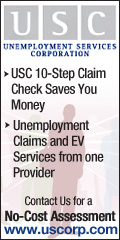
| September 2011 | Past Issues | Advertise |
Massachusetts Model Employer Initiative
Massachusetts Governor Deval Patrick wasn’t making empty campaign promises when he went public with a commitment to increase diversity in the state’s workforce. Within thirty days of his inauguration, Governor Patrick had issued Executive Order 4781, recommitting the Commonwealth to, among other objectives continued improvement in the recruitment and retention of under-represented groups of people in the workforce, including people with disabilities. And he backed up that commitment with a promise to act locally, by making the state government a model employer of people with disabilities. With the creation of the Massachusetts Task Force on Employment for People with Disabilities, a first step was taken towards realizing that vision. In June, 2009, the Task Force delivered a Strategic Plan outlining 25 objectives designed to achieve the overarching goal of creating an inclusive environment that recruits, retains, and promotes people of all abilities. The so-called Model Employer Initiative was challenged early on by the discovery that there was little hard data on the number of people with disabilities already employed in state government. While there was an assumption that many current employees had unreported disabilities, there was also recognition that misinformation about possible impacts on their job status, coupled with a lingering fear of stigma, prevented many people with disabilities from self-identifying. In response to these misconceptions, the Taskforce created a marketing campaign to raise awareness of the prevalence of disability in the workplace, to emphasize the value of employees with disabilities, and to encourage state employees with disabilities to self-identify. This campaign featured boldly-colored posters with a powerful core message: CLICK HERE TO VIEW THE AD CAMPAIGN Raising Awareness The key to bringing about the desired culture shift to an atmosphere of inclusion begins with raising awareness of the issues surrounding disability employment. The Model Employer Initiative takes a two-pronged approach to raising awareness:
Creating Opportunities The Model Employer Initiative includes strategies for increasing the number of people with disabilities who are hired by the Commonwealth. Finding qualified candidates requires:
Providing Support The Employment Initiative backs up its outreach efforts to the various state agencies with tangible support in the form of financial assistance when needed to implement necessary accommodations for employees with disabilities. Through the Reasonable Accommodation Capital Reserve Account (RACRA), administered by the Office on Disability, state agencies may apply for funds to help with capital expenditures on such things as assistive technology, physical barrier removal, and office adaptations. There is a pervasive myth that providing reasonable accommodations for employees with disabilities is expensive. Research conducted by the Job Accommodation Network, a non-profit agency, suggests that well over half of accommodations cost nothing, and that the average cost of a one-time accommodation (for example, for assistive devices) is $600. An analysis of RACRA funds expended since 2009 supports this claim, with the most costly accommodations averaging just over $500. Measuring Success The lifespan of the Massachusetts Model Employer Initiative has, unfortunately, coincided with a period of economic downturn across the Commonwealth. Still, despite workforce reductions, the percentage of state workers who have disabilities has held steady at around 2.8%. Furthermore, the distribution of self-identified employees with disabilities shows a majority of those employees hold professional positions, dispelling the myth that people with disabilities tend to be employed at lower levels. The number of state employees self-identifying as having a disability has increased steadily since the initiative began in 2009, suggesting that the targeted marketing campaign has succeeded in raising awareness of the benefits of standing up and being counted. The final measure of success will be when the initiative is fully embedded in the infrastructure of state government. With a combination of ongoing support from the state’s top leadership, and consistently effective communications strategies, Massachusetts stands an excellent chance of indeed being a model at the national level for employment of people with disabilities. About the Author: |
|
303 Wyman Street, Suite 285, Waltham, MA 02451-1253 |
 |



